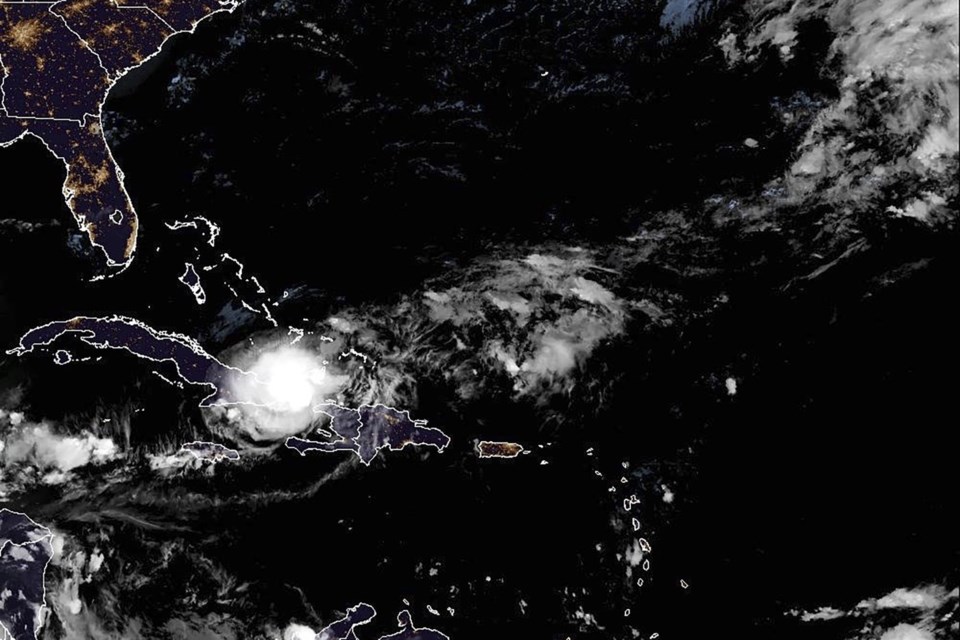HAVANA (AP) — Oscar has weakened to a tropical storm after making landfall Sunday in eastern Cuba.
The U.S. National Hurricane Center said Oscar had 70 mph (110 kph) winds late Sunday and was 40 miles (65 kilometers) east of Guantanamo. It was moving west-northwest at 6 mph (10 kph).
Oscar was a Category 1 hurricane with maximum sustained winds of 75 mph (120 kph) when it made landfall in Guantanamo province, near the city of Baracoa, on Sunday evening.
The storm was forecast to weaken further as it moves north of Cuba late Monday and toward the southeastern and central Bahamas.
Rain and some flooding has been reported in low-lying areas of Cuba’s eastern provinces. Cuban media reported high swells on the coast and some damage to buildings in Baracoa.
THIS IS A BREAKING NEWS UPDATE. AP’s earlier story follows below.
HAVANA (AP) — Hurricane Oscar brought heavy rains and winds to Cuba, an island beleaguered by a massive power outage, late Sunday after striking the southeastern Bahamas earlier in the day, the U.S. National Hurricane Center said.
The hurricane center said the storm’s center made landfall in the eastern Cuban province of Guantanamo, near the city of Baracoa, on Sunday evening. Its maximum sustained winds were 75 mph (120 kph).
Thunderstorms and rain, along with moderate flooding in low-lying areas, were reported in the country's eastern provinces. Cuban media said two-meter swells were hitting the coastline and damage to roofs and walls in Baracoa had been observed. Authorities have set up 20 centers for evacuees.
The system is expected to move across eastern Cuba Sunday night and Monday. Forecasters said 6 to 12 inches (15.2 to 30.5 centimeters) of rain are expected across eastern Cuba through early Wednesday, with some isolated locations getting up to 18 inches (45.72 centimeters). A storm surge of up to 3 feet (0.91 meters) in some areas of Cuba's north shore in the area was possible, the center said.
Oscar was expected to weaken over eastern Cuba before making a turn to the northeast and approaching the central Bahamas on Tuesday, the center said.
The storm’s center late Sunday was located about 20 miles ( kilometers) west of the eastern tip of Cuba and about 45 miles (75 kilometers) east of Guantanamo. It was heading west-southwest at 6 mph (9 kph).
Oscar made landfall on Great Inagua island in the Bahamas earlier Sunday. It was expected to produce a dangerous storm surge that could translate into significant coastal flooding there and in other areas of the southeastern Bahamas. Two to four inches (5.1 to 10.2 centimeters) of rainfall were expected, with isolated areas seeing up to 6 inches (15.2 centimeters).
The hurricane's arrival comes as Cuba tries to recover from its worst blackout in at least two years, which left millions without power for two days last week. Some electrical service was restored Saturday.
Philippe Papin of the National Hurricane Center said it was somewhat unexpected that Oscar became a hurricane Saturday.
“Unfortunately the system kind of snuck up a little bit on us,” Papin said.
Hours earlier Tropical Storm Nadine formed off Mexico’s southern Caribbean coast. It degenerated into a tropical depression as it moved over land.
The Associated Press



